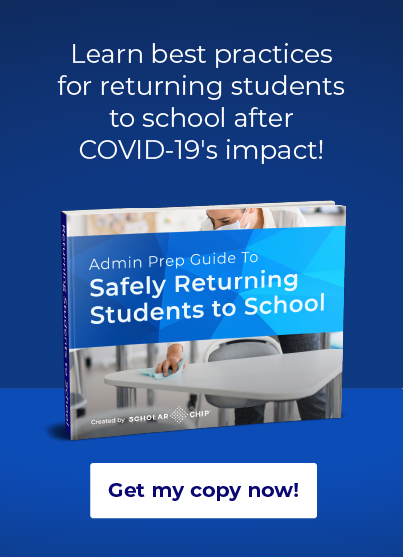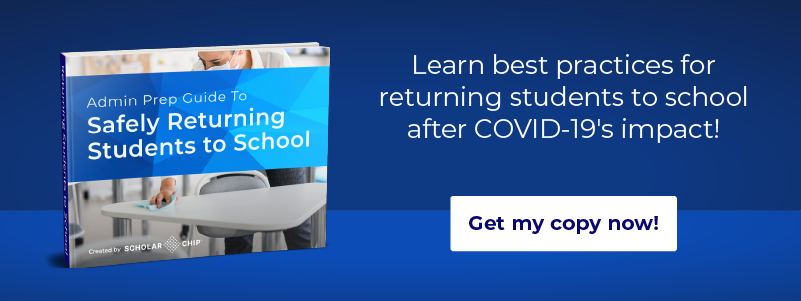In the final week of February 2020, Dr. Nancy Messonnier of the CDC warned that the novel coronavirus spreading through parts of Asia and Europe would come to the United States and cause “serious disruption” to everyday life. While the warning was well publicized, most families with school-aged children were still caught off guard by the sudden closure of schools two weeks later. A spike in COVID-19 cases led Seattle Public Schools to close its buildings on March 11, 2020. Four days later, the largest school district in the nation, New York City Schools, shut down, and the next day, Los Angeles Unified, the second-largest district, closed as well. By March 25, 2020, one month after Messonnier’s warning, every state had recommended or ordered school closures, disrupting not only education but also the essential social functions that schools serve in their communities.
Reopening schools is a critical part of reopening the entire economy as states lift “stay-at-home” restrictions. Students, their families, and teachers are looking forward to a return to normal as a vital part of the nation’s recovery from the global pandemic. However, “normal” will be different. Similar to emergency management plans, a reopening plan must address prevention, mitigation, training, and response to new outbreaks. Plans must be flexible. No one in a leadership position today has ever dealt with a health emergency of this scope, and as our understanding of the virus evolves, so must our response. School leaders must be prepared with a comprehensive plan and the tools necessary to safely reopen schools after COVID-19.
What we know about COVID-19 transmission
Our understanding of how the virus spreads is changing as new data becomes available and the CDC revises health guidelines to reflect the most up-to-date information. While the virus may remain intact for several days on surfaces, posing a risk to people who come in contact with infected surfaces, studies are showing that COVID-19 is mainly shared through person-to-person contact.
Respiratory droplets are the primary transmission vehicle, and the virus is easily spread between people standing within 6 feet of each other, particularly if the infected person coughs or sneezes. This evidence leads the CDC to recommend maintaining distance from others and wearing a face covering to trap droplets.
The virus may remain intact for up to three days on hard surfaces and could infect someone who touches the surface and then brings their hand to the eyes, nose, or mouth. Outdoor spaces, studies now show, pose less of a transmission risk than indoor spaces. The ability of the virus to infect depends largely on how much of the virus an individual is exposed to. Indoors, the virus has more opportunity to hang in the air and concentrate into an infectious dose. Outdoors, the virus dissipates, lessening the amount of virus that an individual will encounter.
Who is most at risk of serious illness?
Initial evidence out of China indicated that the elderly and those of all ages with underlying health problems are most severely affected by the novel coronavirus. At this stage in our understanding of the virus, the concern with healthy children was that they could potentially carry and transmit the virus to the more vulnerable, but their own health was not at risk. As the virus spread throughout the United States, medical professionals detected an alarming syndrome in children that they suspect is related to COVID-19. Multisystem Inflammatory Syndrome (MIS-C) poses a new safety challenge for schools set to reopen and adds to parents’ fears about sending their children back out into the world. A reopening plan must address these concerns.
As more is learned about this syndrome, school administrators should expect specific guidelines from state and federal health officials to safely reopen schools after COVID-19 closures.
Necessary components to safely reopen schools after COVID-19
Cleaning and disinfecting procedures
When students and teachers return to school buildings, things will be different. Without a vaccine and effective therapies, the virus poses a threat wherever people gather. Schools must plan to step-up cleaning and disinfecting procedures, similar to how schools respond to norovirus and other “stomach bug” outbreaks that are common in the winter. This includes routine cleaning of frequently touched surfaces: doorknobs, light switches, desk, and countertops. It may be necessary to install hand sanitizer stations at doorways and provide classrooms with disinfecting wipes to keep surfaces clean during the school day.
Health screenings
Screening employees and students for fever and cough may ease fears within the school community, but studies have found as many as 25% of those infected show no symptoms, so screenings alone cannot be relied on to keep the virus out of schools. Taking temperatures at the door should be viewed as one layer of caution. Students and school personnel must understand the importance of staying home if they feel ill, and a reopening plan should include distance learning plans for students and teachers who must stay home.
Social distancing measures
Social distancing measures have helped flatten the curve across the country, and school leaders can take lessons from this experience as they reopen their buildings. Keeping the number of people gathered at one time to a minimum has been effective in reducing virus spread. Students may be scheduled to return in waves or rotated three days on, two days off, to reduce the number of students in the building at one time. Dividing students into groups and keeping groups separated can reduce spread within the school community in the same way stay-at-home orders protected household groups.
The CDC recommends that desks face forward and are appropriately spaced. Group gathering areas—auditoriums and cafeterias—should remain closed. Students may eat lunch at their desks or outdoor picnic tables. Consider strategies such as staggering class dismissal times to reduce hallway congestion.
Prepare a response to illness
In normal years, schools experience increased student and staff absenteeism during the cold and flu season. The new virus will require closer attendance monitoring, and districts must coordinate with state and local health officials on how to report increases in absenteeism that may indicate a local COVID-19 outbreak.
Reopening plans must include response procedures in the event that someone within the school community tests positive for the virus. Schools may need to close buildings and resume remote learning. Mechanisms for quickly communicating information to parents and the community must be in place.
Tools for monitoring building activity
To safely reopen schools after COVID-19 closures, school administrators will need to closely monitor building activity. This may be a good time to upgrade school IT with automated attendance and visitor management systems. Modern technology can help better secure buildings and improve operational efficiencies. Student and staff smart ID cards utilizing RFID technology can provide real-time data on attendance. Administrators, through an administration portal, can see at once who is in the building and keep close tabs on attendance data. Additionally, automated systems create accurate records that may be shared with local health officials for contact tracing purposes.
Dr. Fauci, Director of the National Institute of Allergy and Infectious Diseases, believes a second wave of infections this fall may be avoided if we proceed with caution. Nothing is certain, but comprehensive plans will allow school leaders to safely reopen schools with confidence. The CDC offers guidelines for reducing risks, and upgraded technology can give administrators the tools necessary to monitor and control campus activities as they implement the new safety protocols.


